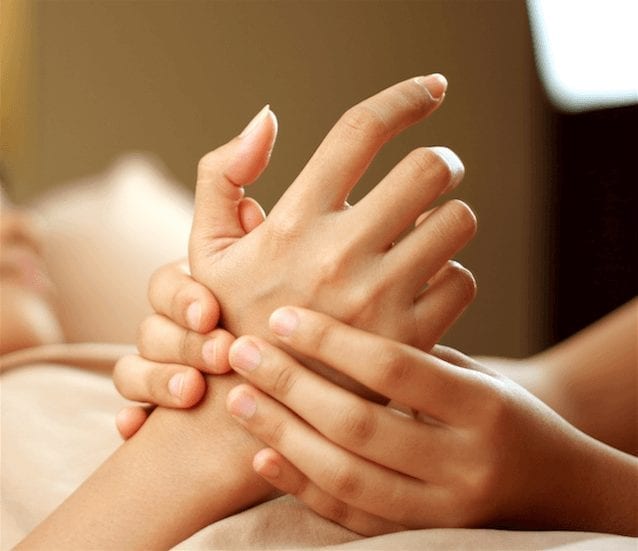According to Traditional Chinese Medicine (TCM), arthritis arises when the flow of Qi and Blood are blocked and prevented from passing through the body’s energy pathways. The Chinese believe that when wind, cold, and dampness penetrate the body’s defenses and enter the muscles, tendons and joints, they can cause stiffness and pain.
According to TCM, there are basically four types of arthritis:
Zuo Bi-The afflicted parts of the body become heavy and numb, and the pain worsens on damp days.
Re Bi-This produces swelling, tenderness and sharp pain in one or more joints.
Xing Bi-Here, the pain wanders about the body in patients who are often slender.
Tong Bi-Severe pain that settles in one or more joints; cold and in activity will worsen the pain, heat will reduce pain.
TCM Treatment Methods for Arthritis
Once the type of arthritis is diagnosed, TCM practitioners use a variety of techniques to treat its painful symptoms. Among the most popular techniques are acupuncture, acupressure, herbal remedies, diet changes and Qi Gong massage and exercises.
Herbal Remedies and Diet in TCM for Arthritis
An old Chinese saying advises that the wise doctor begins his cure of disease with good food. When using herbal medicines to treat arthritis, a traditional Chinese herbalist will ask many questions about a patient’s overall health before creating a formula that will relieve the symptoms of pain. Each formula has a single goal to move the Blood and Qi. In general, royal jelly, papaya and black soybeans can be helpful for rheumatoid arthritis.
Acupuncture and Acupressure for Arthritis Relief
As a complement to herbal techniques, TCM often employs acupuncture to treat the symptoms of arthritis pain. Needles are placed at key points along the meridians to move Blood and Qi. (Meridians are invisible lines corresponding to the flow of energy or chi in the body and are connected to specific organs and systems.) It usually takes a number of weeks for acupuncture to produce prolonged relief from arthritis. Many patients say they feel better after even the first treatment.
For those who prefer less invasive techniques of pain relief, there’s acupressure. Here, pressure, using the practitioner’s fingers, is applied over the same points along the meridians. For example, applying pressure over the “Aspirin Point”–located between the Achilles tendon and the anklebone–may provide some relief from arthritis pain.
Are you interested in becoming a certified acupuncture professional?
Visit the links below to explore our specialized acupuncture programs at a campus near you:
Qi Gong and Tai Chi in TCM for Arthritis Management
Finally, there’s Qi Gong exercises. These include Tai Qi Quan and the Eight Brocade exercises, which provide the gentle motions and stretching needed to remove obstructions and help alleviate pain. Some patients also undergo Qi Gong massage therapy, which can further increase the flow of Qi and help reduce pain.
Recently, a study revealed that Tai Chi might help reduce the pain of arthritis*. The study analyzed seven eligible randomized controlled trials that used Tai Chi to treat patients with musculoskeletal pain. The results demonstrated that Tai Chi exercises relieved pain and disability in patients suffering from arthritis.
*Study of Tai Chi for arthritis pain relief from an abstract
http://www3.interscience.wiley.com/journal/122410621/abstract
Featured Posts:

